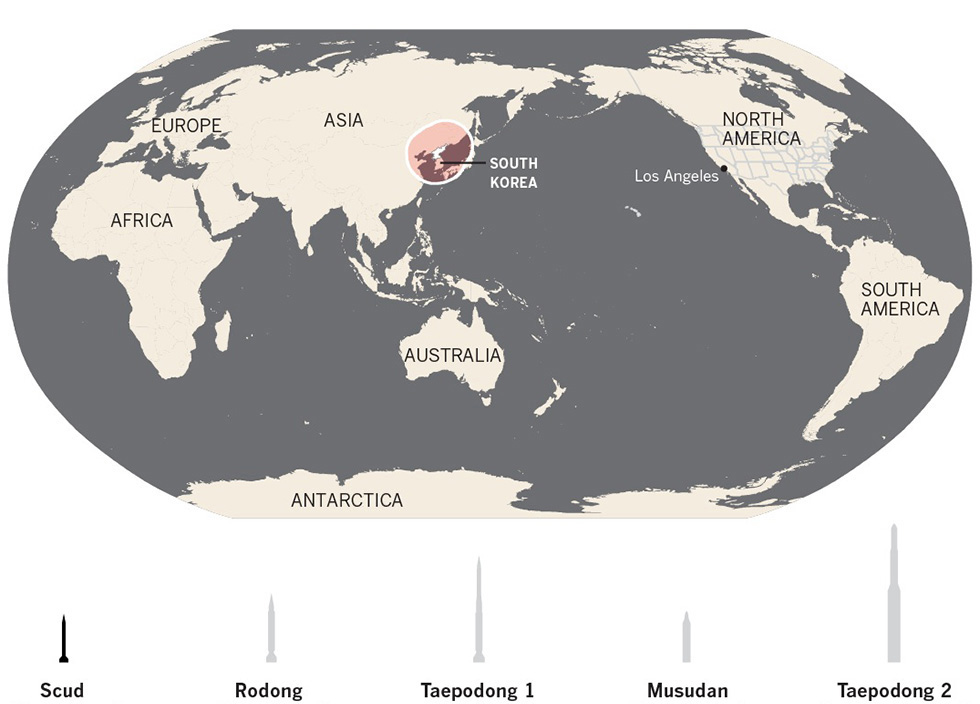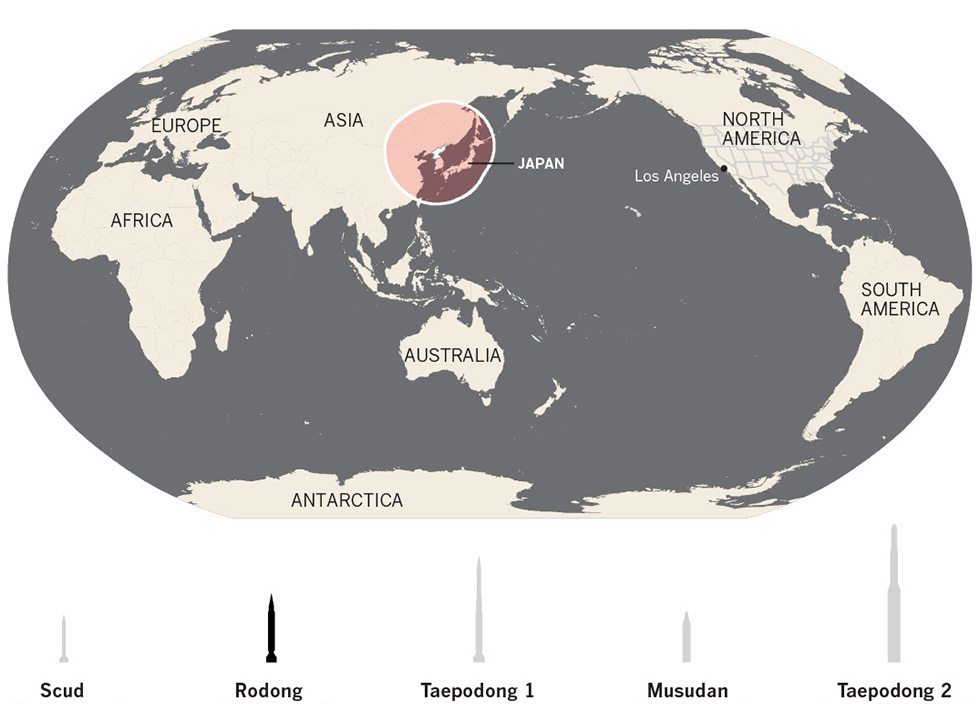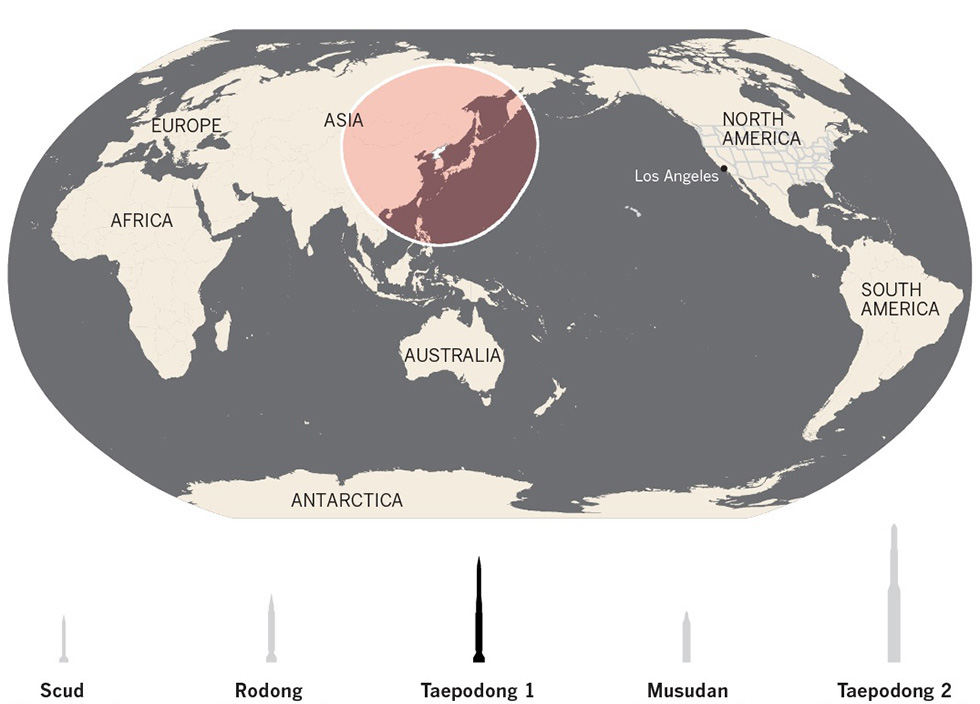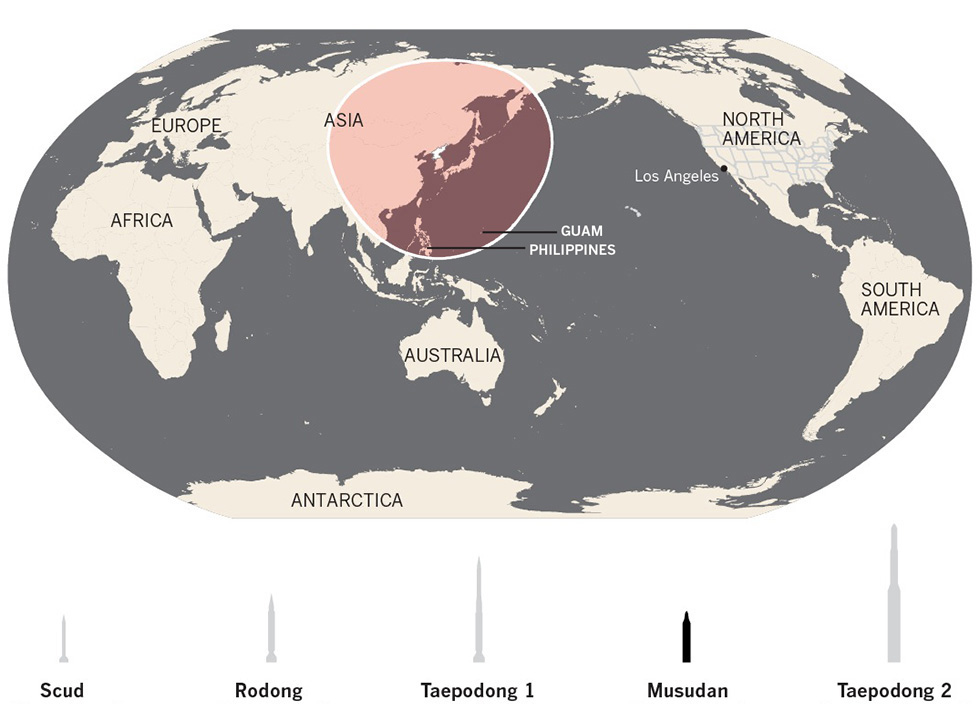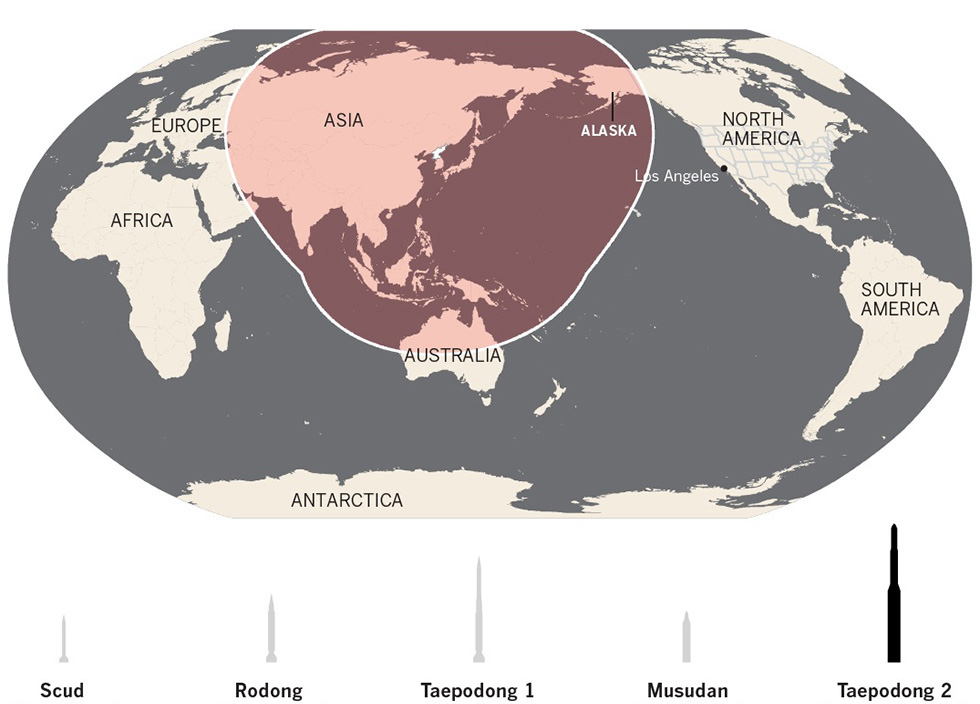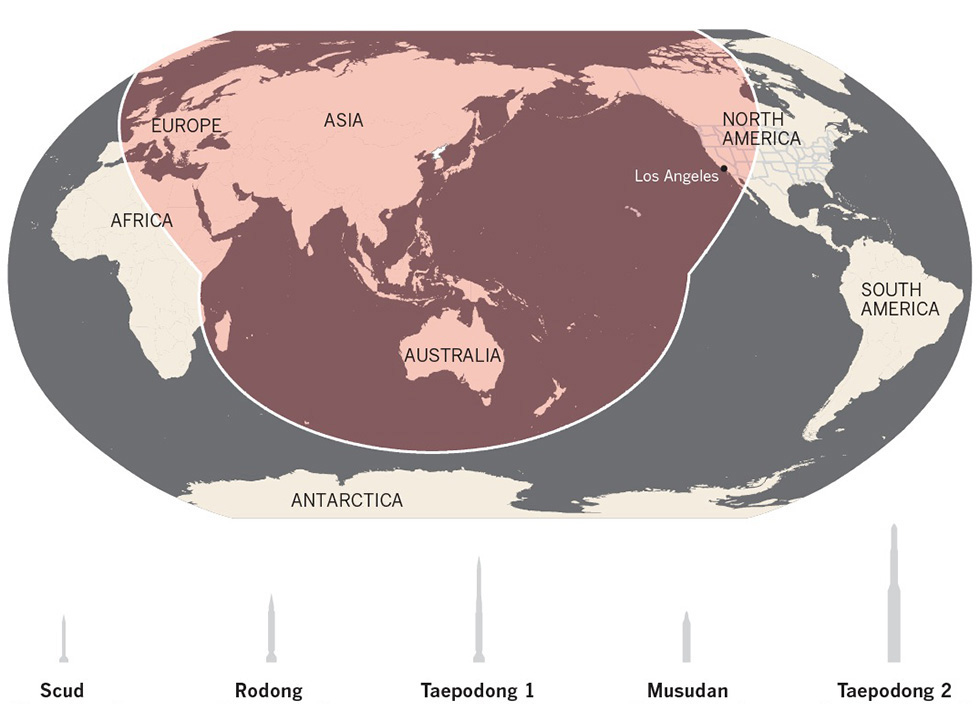Scuds (operational)
Rodong (operational)
Taepodong 1 (operational)
Musudan (in development)
Taepodong 2 (in development)
Advanced Taepodong 2 (in development)
North Korea has several versions of this single-stage missile. Their ranges are estimated at between 180 and 310 miles, which means they could reach South Korea. They are not considered particularly accurate.
With an estimated reach of up to 800 miles, this medium-range missile could be used to target South Korea, Japan and U.S. bases in both countries. The missile is single stage on mobile launchers and believed capable of carrying a nuclear warhead.
This missile has a potential range of 1,600 miles, but with poor accuracy and no meaningful strike capability. In 1998, North Korea claimed to have placed a satellite in orbit with the unguided rocket version of the Taepodong 1, but South Korean and U.S. officials say the launch ended in failure.
This mobile, land-based missile has an estimated range of 1,800 miles or more, putting the Philippines and possibly Guam just within its strike range. But it is not thought to be particularly accurate. South Korea says it is one of several missiles that North Korea redeployed to its eastern coast last month.
This two-stage missile could have a range of more than 4,100 miles, putting Alaska and Australia within striking distance. U.S. and South Korean officials say a secret 2006 launch fizzled soon after takeoff.
With a range estimated at 6,200 miles and up, the U.S. West Coast, Hawaii and Europe are within possible striking distance of this three-stage missile. U.S. and South Korean officials say the North Koreans conducted a successful launch of the rocket version of this system in December.
 BACK
BACK


